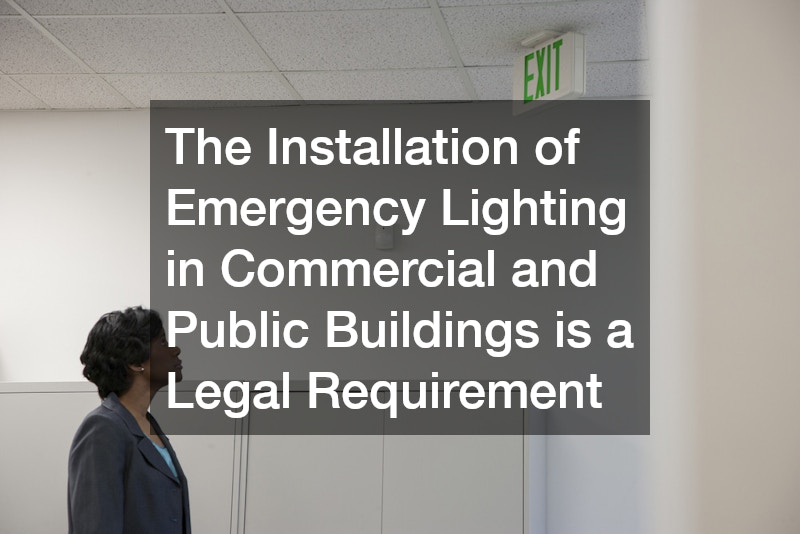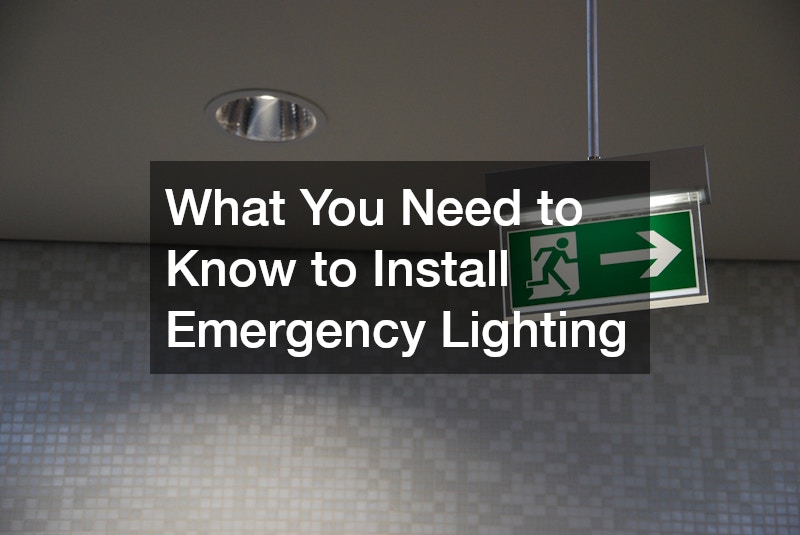Emergency lighting is a crucial component of building safety. It is specifically designed to provide illumination in the event of a power outage or any other situation where the main lighting system fails. The primary goal is to ensure that occupants can safely evacuate the premises.
In high-stress situations, such as a fire or a natural disaster, the presence of emergency lighting can significantly improve safety outcomes. This system is not only vital for providing visibility but also for maintaining an orderly and calm evacuation process.
In many countries, the installation of emergency lighting in commercial and public buildings is a legal requirement. Compliance with these laws is critical, and failure to adhere can lead to severe penalties, both legal and financial. Emergency lighting systems must adhere to specific standards that ensure their reliability and efficiency. They must be capable of functioning for a minimum duration, typically around 90 minutes, during an emergency situation. Therefore, understanding the regulations and ensuring compliance is essential for facility managers and building owners alike.
Beyond safety and legal compliance, there are insurance considerations to be aware of. Many insurance policies for businesses require evidence of a functional emergency lighting system as part of their terms. Failure to have these systems in place can result in complications or denials in claims. Thus, installing emergency lighting not only protects the physical safety of occupants but also safeguards financial interests. Regular maintenance and checks are equally important to ensure the system remains operational at all times.
Types of Emergency Lighting
Emergency lighting comes in various forms, each designed to address specific needs during a power outage. The most common types include standby lighting, escape route lighting, and open area lighting. Standby lighting is used to continue operations in certain critical areas when the main power supply fails. Meanwhile, escape route lighting assists individuals in locating and navigating exit routes safely. It is crucial to understand the purpose of each type when planning the installation of emergency lighting systems.
Open area lighting, also known as anti-panic lighting, is typically used in spaces where the large size or layout might cause panic during an emergency power failure. Its goal is to reduce the chance of panic and help individuals orient themselves quickly. Selecting the appropriate type of emergency lighting depends on the specific requirements of the building layout and occupancy levels. Site-specific assessments are often necessary to determine the best emergency lighting solutions for each unique context.
Technological advancements have also introduced new options into the market. LED emergency lighting, for example, offers energy efficiency and longer lifespan compared to traditional lighting methods. There are also smart emergency lighting systems available that can be integrated into existing building management systems for remote monitoring and control. With these modern options, building owners can enhance the safety and efficiency of their emergency lighting installations.
Steps for Installing Emergency Lighting
The process of installing emergency lighting begins with a comprehensive plan of the building. This includes mapping out all potential exit routes and areas that require illumination in the event of an emergency. Once the plan is established, it’s important to choose the appropriate type and amount of lighting fixtures. The installation process should be conducted by certified professionals to ensure compliance with all safety standards and regulations. Proper installation is crucial for the system to function effectively when needed.
After positioning the emergency lighting units, it’s imperative to conduct a thorough testing procedure. Each unit should be tested to confirm it operates correctly and for the required duration during a power outage. Regular maintenance checks should be scheduled to keep the system in optimal condition. Any malfunctions or issues identified should be addressed immediately to ensure the lighting system remains reliable. Documentation of all tests and maintenance should be kept for review during inspections.
Finally, educating occupants about the emergency lighting system is an often-overlooked but essential step. Clear instructions and signage should be placed throughout the building to guide individuals to the nearest exits during an emergency. Running regular emergency drills helps ensure everyone is familiar with their evacuation routes. This preparation can lead to more efficient evacuations and enhance overall safety within the building. By involving occupants in the process, the full benefits of the emergency lighting system can be realized.
Maintenance and Upkeep of Emergency Lighting
Regular maintenance of emergency lighting systems is essential for ensuring their reliability in critical situations. This involves periodic checks of the power supply, light sources, and battery units. Batteries, particularly those in older systems, may lose efficiency over time and require replacement. It’s also essential to ensure that all lighting fixtures are clean and unobstructed. Scheduling regular maintenance ensures that the system remains in compliance with local safety regulations.
A proactive maintenance schedule can prevent unexpected system failures. This is achieved by conducting monthly functional tests and annual full system tests. During these tests, individual unit functions should be checked alongside the complete system operation. Identifying potential issues early on can prevent them from becoming significant problems during an emergency. Maintaining detailed records of these inspections helps track system performance over time and meets regulatory requirements.
Lastly, it is advisable to stay updated with technological advancements and regulatory changes regarding emergency lighting. Newer systems often offer enhanced safety features and energy efficiency. Retrofitting outdated systems with modern alternatives can improve reliability and reduce energy costs. Collaborating with a professional service provider can offer insights into the latest best practices and product innovations. Keeping abreast of industry developments ensures that your emergency lighting system remains both up-to-date and compliant.






